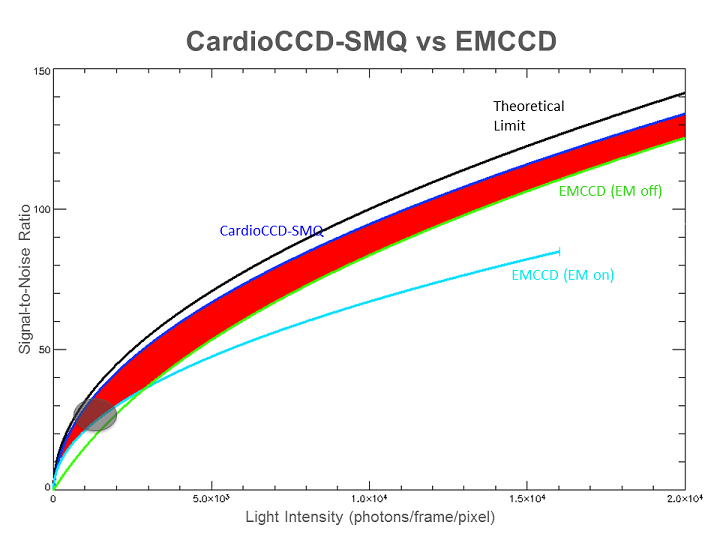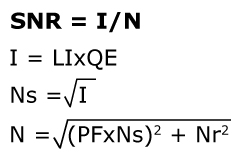
| Theoretical Limit | : | QE - 100%, ReadNoise - 0e-, No Shot Noise Penalty factor (PF = 1.0); |
| cardioCCD-SMQ | : | QE - 90%, ReadNoise - 6.5-7e- (at 500fps, 30X & 10X gain), No Shot Noise Penalty factor (PF= 1.0); |
| EMCCD | : | QE - 90% |
| EM on | : | ReadNoise
- 0e- + extraneous noise (0 is used), Shot Noise Penalty factor >= ( ( is
used); is
used); |
| EM off | : | ReadNoise
- 51e-, No Shot Noise Penalty factor (PF= 1.0); |
Algorithm:

Where:
I – Effective Light Intensity,
LI – Light Intensity,
N – Noise (RMS),
Ns – Shot Noise,
Nr – Read Noise,
QE – Quantum Efficiency,
PF – Penalty Factor (shot noise)

A typical example of ArcLight operating range for
Drosophila is conceptually placed in the graph based on | |

The Red region shows the
S/N advantage of cardioCCD-SMQ over EMCCD (EM on). EMCCD (EM on) has advantage
over cardioCCD-SMQ when photons/frame/pixel is less than 100e- (near the origin). | |
| Blue curve - In "EM on" mode the well size is limited. The cap may vary for different devices. |